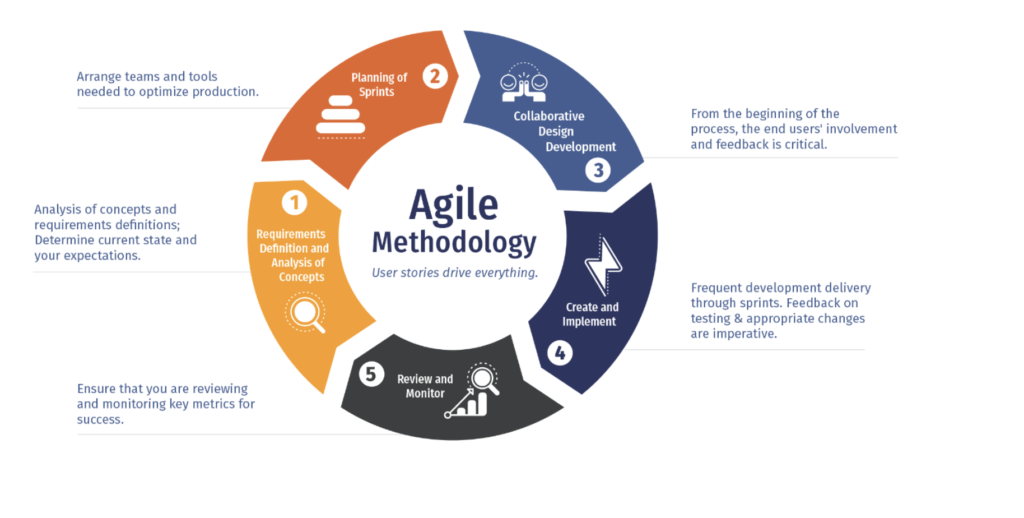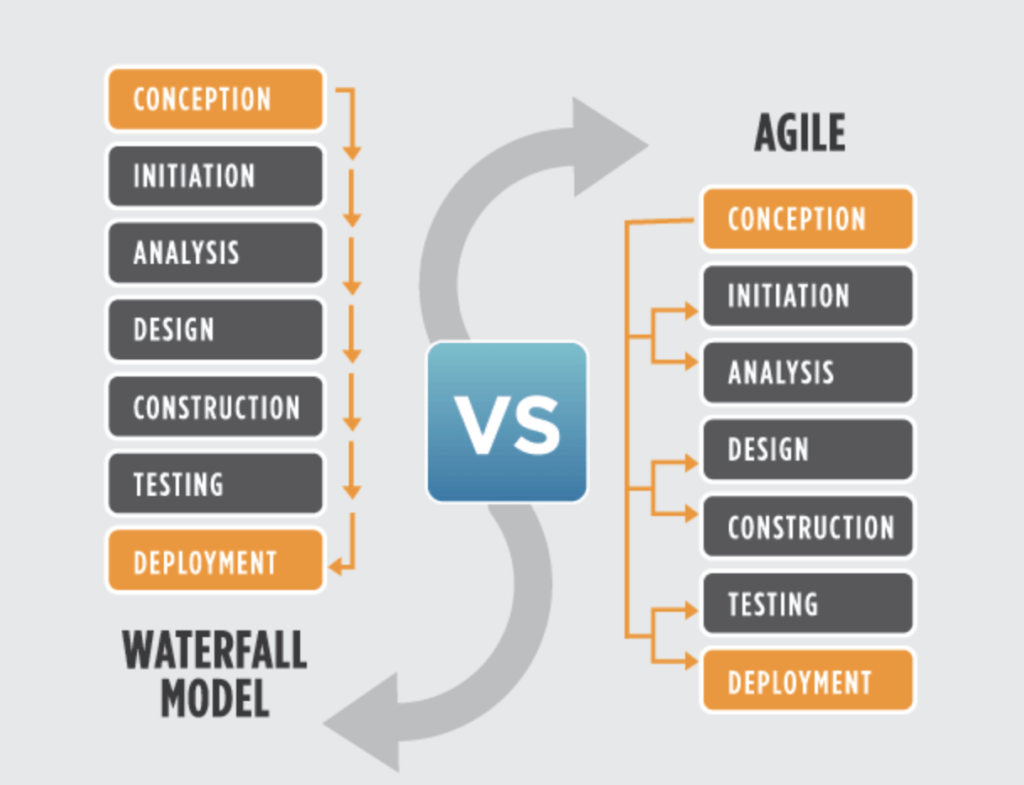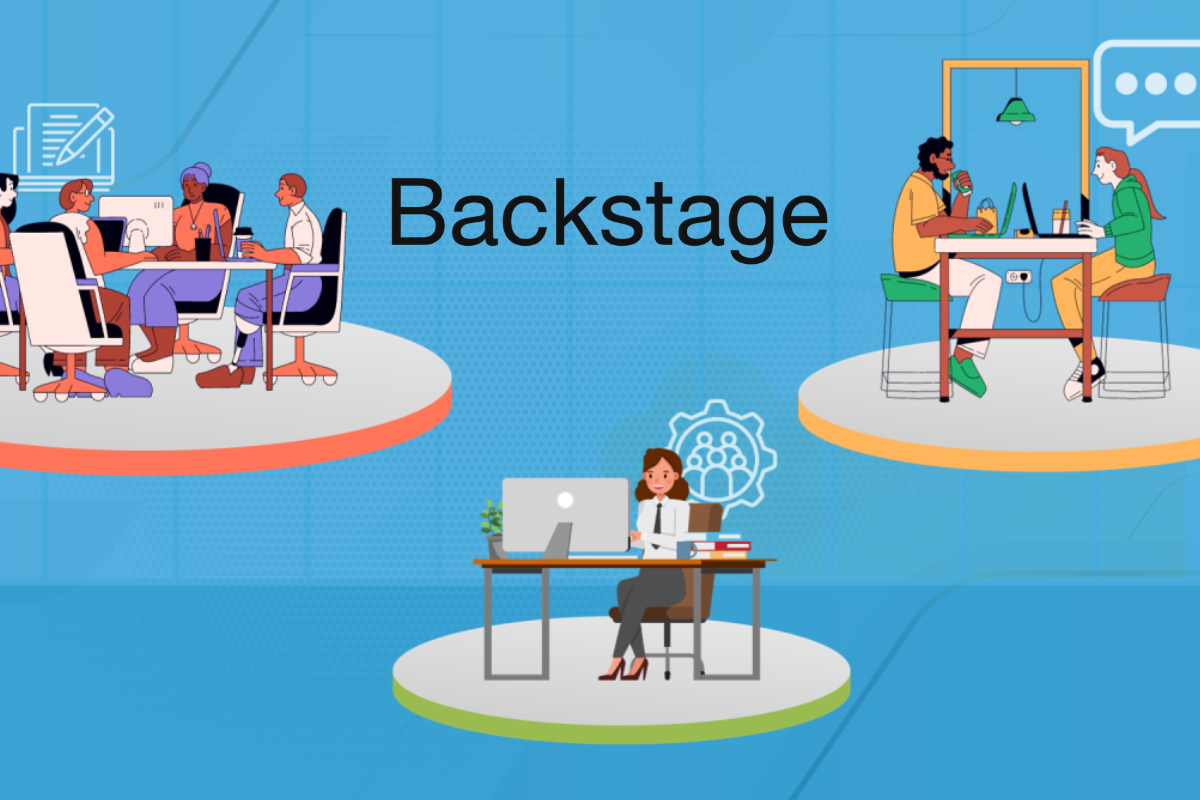What is Agile Methodology?
Introduction
In this blog, we will talk about agile methodology, and how it has revolutionized the software development life-cycle. We will discuss its merits over the other software development models and briefly discuss how to use it.
What is Agile?
Agile is the process of iterative and continuous software development and project management, with constant and continuous deliveries that are adding functionality to the software or the project and delivering it simultaneously, in contrast to adding all the functionalities together and then delivering the product or the software.
Agile focus on delivering the features or a set of features in a short span of time that can be as short as a week or as long as 4 weeks. Generally, the best practices include the software delivery every 2 weeks.

Why use Agile over other Models?
In this rapidly changing world, and with a continuous flow of data, requirements keep on changing over a span of time. It is necessary to deliver the product on time and get it reviewed simultaneously.
By following the agile methodology it is very easy to deliver your features in a short span of time as well as get them reviewed and update at a very fast pace.
Agile has taken over the classical model of software development because of the following disadvantages-
- Classical Models such as the waterfall model require huge planning efforts and a lot of dependencies issues to design the whole product or software in one go.
- Rapid Changing technology and requirements may change the whole product design.
- Technical and project members’ availability over a long span of time is also a big challenge.
- No real-time communication with the client as all the features will be delivered at once.
All these points affect the software and product delivery a lot, because which agile model was introduced, and it resulted in a boon for the software industry.
Because of Agile, the iteration cycle was reduced to 2 weeks, which resulted in better communication and more understanding of the requirements of the product as per client, better delivery rate gave a boost to the engineers and the team members’ confidence.
Short iterations resulted in a minimization of the risk factor of changes in the overall design.
Documentation is now also reduced to very less pages as real-time communication was introduced and more clearance of the requirements was there.
An indication of the rapidly changing environment with the product also changing with it.
Agile methods in Details
The four pillars of agile methodology are-
- Scrum
- Extreme Programming
- Adaptive Software Development (ASD)
- Dynamic System Development Method (DSDM)
The most important of these pillars is Scrum, let’s discuss it in brief.

What is Scrum?
Scum is a process or a practice(you can also call it a framework) where the whole team comes together to discuss the problems or the requirements, picks up the tasks and assign them to themselves, and then start working. Scrum is an iterative process where it can be repeated in a day also i.e. one at the start of the day while the other at the end of the day. There can be a scrum master within a team who can lead these scrum meetings. The main purpose of these scrum meetings is to define and know where we are standing in terms of product delivery what are the different blockers that are present and how to resolve them. Not only that it is also a platform where any of the team members can share their problems and get a solution from other team members. In short, we can say that it is a place where all the planning, problems, and solutions are discussed. A scrum can also be defined as a way to restart the game after an interruption. The main focus of scrum is to manage the iterative development.
The key points of a scrum are-
- It is an incremental and iterative process
- Team-based meetings result in a better communication
- Productivity is maximize
- Better understanding among the team members
- Conflict of interests is resolved in scrums

How the Scrum Work?
There are 3 stages or we can say 3 phases in a scrum-
- The starting phase is the planning phase, where the software architecture design and the objectives are discussed and planned.
- The second phase includes sprint cycles, where each cycle results in the possible delivery of a feature or increment in the development.
- The final phase is the project closure
What is a Sprint?
- A sprint is a month-long(1 to 4 week) iteration, during which incremented a product functionality or delivers a functionality.
- No outside influence can interfere with the Scrum Team during the Sprint, once the sprint is finalized until or unless it is very important no other task is introduced in a sprint.
- Each Sprint begins with the Daily Scrum Meeting at the start of the sprint cycle.
What is a Sprint Cycle?
- The first phase of the sprint cycle is the product backlog, which is the list of work to be done on the project. Story points are also assigned to the tasks in order to monitor the individual progress of the team members.
- The second phase is the selection phase involves all of the project team who work with the customer to select the features and functionality to be developed during the sprint.
- Once these are agreed upon, the team organizes themselves to develop the software. During this stage, the team is isolated from the customer and the organization, with all communications channeled through the so-called ‘Scrum master’ with tickets that can be used for clearing the doubts or adding the documentation also.
- The role of the Scrum master is to protect the development team from external distractions and clear their doubts with the client or the product owner.
- At the end of the sprint, the work done is reviewed and presented to stakeholders. The next sprint cycle then begins.

Conclusion
That’s it for now, I hope it must be a great learning experience, please feel free to ping me regarding any queries or suggestions. Thanks for reading.
Still Curious? Visit my website to know more!
For more interesting Blogs Visit- Utkarsh Shukla Author
references: Internet
Add Comment
You must be logged in to post a comment.







